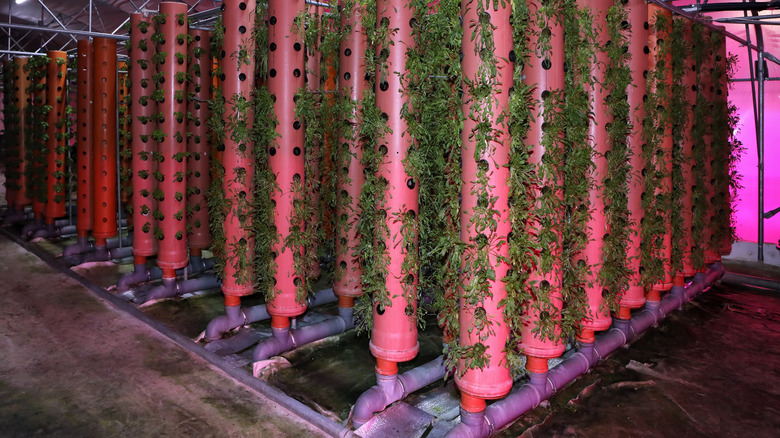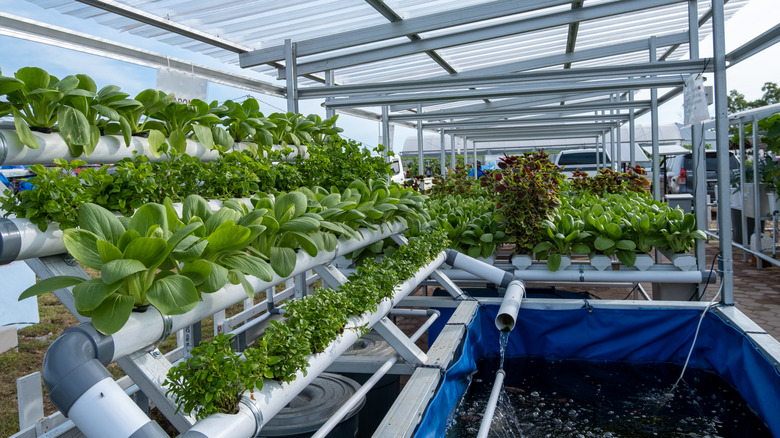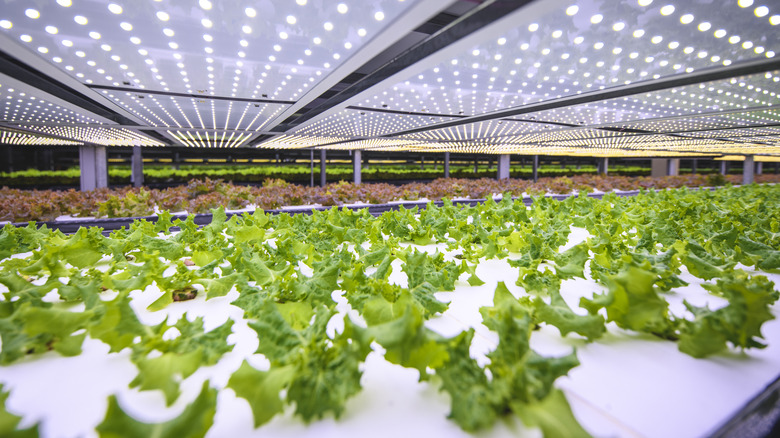Aeroponic Vs Hydroponic Growing: What Is The Difference In Gardening?
Conversations around topics like hydroponics and aeroponics are prone to veering off the garden path and onto the paved superhighway of agribusiness. For the home gardener who doesn't have a 5,000-square-foot greenhouse or a staff of chemists and programmers, it can be hard to nail down the differences between aeroponics and hydroponics, and to figure out how it all relates on the scale of an individual gardener. This is unfortunate because both do open new vistas for the home grower... or at least for the right sort of home grower. It's not for everyone. Aeroponics, a type of hydroponics that transfers nutrients to plant roots via mist, is a bit more technical and fiddly than standard hydroponics. But both can be challenging, and both can be very rewarding.
Demystifying these approaches to growing plants is a good place to start, so let's look at the basics. In hydroponic systems, rather than using soil as a growing medium, plants' roots get nutrients from a solution into which the roots are submerged either continuously or periodically. Aeroponics delivers a similar nutrient solution to the plant's roots by turning the solution into airborne droplets, most commonly using misting nozzles but sometimes using an ultrasonic or mechanical fogger (basically, a humidifier). It's less technical than it might sound, but it's an understandably foreign concept to some old-school gardeners who like to dig their fingers into rich soil and can tell how healthy the soil is by taking a whiff.
The different requirements of hydroponics and aeroponics
You'll find a lot of similarities between hydroponics and aeroponics (again, aeroponics is a type of hydroponics) and some key differences. Plants, especially smaller ones like leafy greens, will often be grown vertically in aeroponic systems. These are often tower-shaped columns into which plants are inserted, but other designs exist, like the Anu, one of our top lawn and garden tech picks from CES 2024. Hydroponic setups, on the other hand, tend to have a more horizontal layout, often in rows. This is all about the nutrient solution delivery: In hydroponics, the plants need access to the liquid solution at the bottom of containers. In aeroponics, the solution is brought to the roots by the aerosolization of the liquid into airborne droplets, which makes it possible to stack plants above each other. (Hydroponic rail systems are made up of long horizontal containers, which are sometimes stacked above each other, offering some of the benefits of vertical growing.
But the real difference is what's happening inside those containers at the root zone. Hydroponic systems either cover the roots in a nutrient solution, as in deep water culture (DWC) hydroponics, or flow the solution over the roots intermittently or continuously. In aeroponics, the container is a somewhat sealed chamber that keeps the root zone humid and contains the nutrient mist, but which typically allows in some fresh oxygen. Importantly, of all these, only DWC-like systems are tolerant of electrical outages of any length.
The benefits and challenges of hydroponics and aeroponics
Exposing roots to more oxygen — which produces bigger root systems, plants, and yields – is the key benefit of aeroponics over hydroponics. But with great root zone oxygenation comes great responsibility. Aeroponics demands that you keep roots protected in a humid chamber, delivering water and nutrients regularly. In return, you get a more efficient system. Efficiency isn't only for farms measuring inputs, outputs, and profit margins. It's also important for home users with limited space and a desire to make the most of it while using no pesticides, using less herbicides and water, and dealing with less disease. The conventional wisdom is that aeroponics somehow uses less nutrients than hydroponics despite higher nutrient absorption rates, but research from Egypt's Benha University shows that aeroponics is simply more efficient... that is, it just produces bigger plants. Both aeroponics and hydroponics are far more efficient in their use of water and nutrients than growing in soil.
Everyone agrees that aeroponics is a more sensitive system requiring precise monitoring and adjustment of pH and nutrient concentrations via sensors, dosing pumps, etc. It's a finicky approach, and it yields bigger plants. Hydroponics is certainly worth exploring, but whether a particular gardener should experiment with aeroponics is largely a matter of preference and temperament. You can also DIY either approach, although there are more easy ways to create a DIY hydroponic garden.


